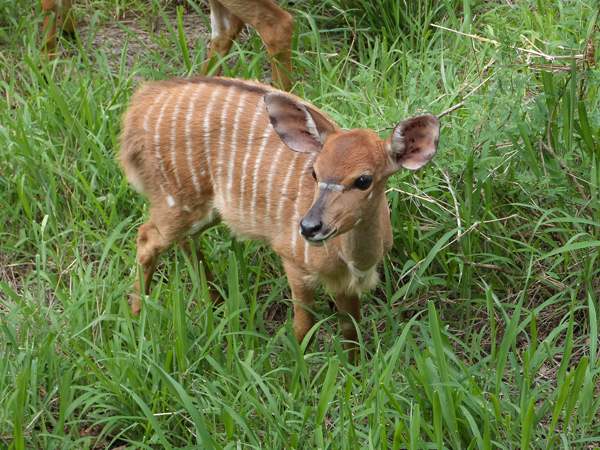Where in the World are Margie and Peter - On Safari

Peregrina's Journey
Peter and Margie Benziger
Sun 15 Dec 2013 08:20
Where in the World are Margie and Peter? On Safari in South Africa and Swaziland!
Once we were safely berthed at the wonderful Zululand Yacht
Club in Richards Bay, South Africa and had compiled a “To Do” list for Peregrina a mile long, we did what every
self-respecting “yachtie” does when he/she hits dry land….ROAD TRIP!!!
We looked at a long-range forecast which predicted we’d have
about 10-12 days of fair skies and figured this would be perfect for a short
getaway before diving into our boat projects and preparing for our trip back
home to the States in mid-December. We
rented a Toyota Corolla from Budget and headed off to explore the central
region of Kwazi-Natal province (which includes Kruger National Park) in South
Africa as well as the neighboring country of Swaziland.
FYI - Richards Bay, where Peregrina is berthed, is just above Durban. On the way to Kruger park we traveled north to Swaziland which is a country located just south of Kruger. It's the small white circle you see on the map below.
FYI - Richards Bay, where Peregrina is berthed, is just above Durban. On the way to Kruger park we traveled north to Swaziland which is a country located just south of Kruger. It's the small white circle you see on the map below.
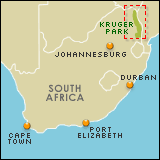
Note: NEVER buy a
used car from Budget in South Africa! It
is only the tourists who drive around in compact cars or mid-range sedans. Everyone else has a tricked-out SUV for good
reason. With the exception of the
interstates and major highways, the country roads here are terrible!! We knocked off practically every underside
protective covering apparatus there was on our chassis and spent the majority
of our time holding our breath as we bounced along bumpy dirt roads or forded rivers
trying to get to our next destination or hotel.
FYI - Rates are super cheap here.
Go for the macho 4-wheel drive and let your inner “bushman” run wild!
Easing into our journey, we made our first stop about an hour
½ north of Richards Bay in the town of St. Lucia where we visited the Emdoneni
Wild Cat Rehabilitation Center. www.emdonenilodge.com Here, they
rehabilitate injured or abandoned animals for reintroduction into the wild as
well as facilitate conservation and education for the endangered Cheetah as
well as other cats such as Serval, Caracal, and African Wildcat.
We were thrilled to meet ‘Jumo,’ a three year old Cheetah
who liked having his ears scratched!
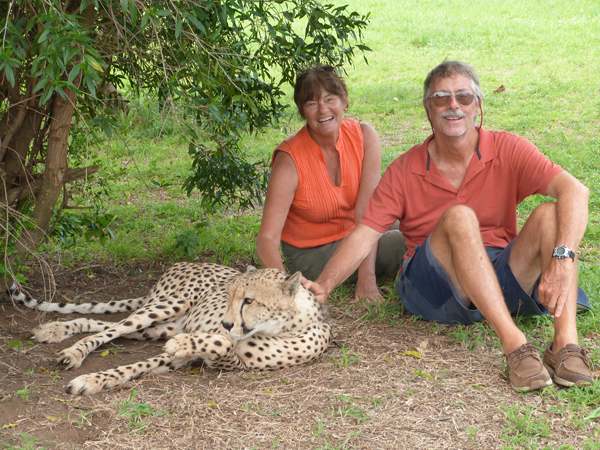
Then it was on to the iSimangaliso Wetlands Park, where we
took a two hour “Hippo Tour” on Lake St. Lucia which allows no public boating
access and is one of the larger marine reserves in the area. We were a bit bummed out because our weather
forecast was already proving bogus and the rain was beginning to fall. However, the captain of the boat told us
that, in fact, this was a GREAT day for hippo spotting because when it’s sunny
and hot the hippos lie so low in the water you can barely see their eyes and
ears but she predicted that now we’d see much more activity as it was a cloudy,
cool day. Her forecast was right on
target and we were treated to quite a show.
Did you know that hippos travel in “Pods” with one dominant male with up
to 20 females and kids in tow?
Sometimes, there are a few younger males but they soon leave the pod to
seek their own destiny. Did you know
that hippos are the most dangerous of all the wildlife in Africa? Yes, it’s true and…FYI, don’t get in-between
a hippo and the water! They get
down-right ornery when someone blocks their path to the bath!
Hippos spend 60% of their time in the water (mostly during
the day) and forage for food at night.
They are herbivores and consume 40-60 kilos of grasses each day.They actually walk along the bottom of the water rather than
swim and they cluster together in their “pod” to protect the youngsters and to
keep themselves warm.
We must have seen 50-60 hippos on our
excursion and it was amazing to get so close to these massive creatures. Look at the wonderful smile!
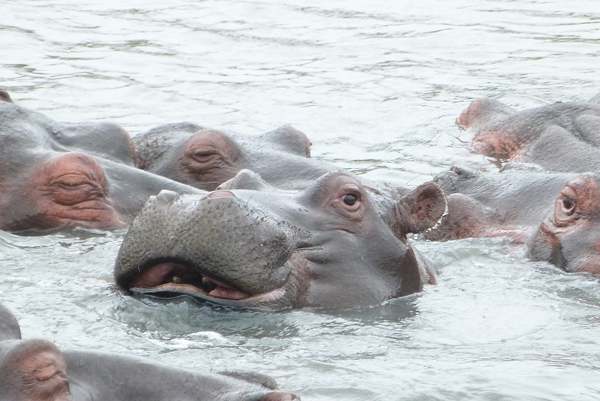
Leaving St. Lucia, we drove a little further north towards
the Hluhluwe–iMfolozi (pronounced Shush-Louie-Em-fo-low-see) Game Park and our
overnight accommodations. With apologies
to Paul McCartney here, this was to be the first of several “…long and winding
roads that lead to your hotel.”
Somehow on this trip, I managed to book three of the most
off the beaten path (but out of this world) accommodations you can
imagine. Having said that, this is also
why major sections of our car's undercarriage are missing. At times, we were so far into the dirt roads of the "bush”, we
wondered if we were possibly heading into a remake of the movie
“Deliverance.” But, never fear! It all worked out amazingly well. I don’t have room to insert all the photos
that I would like so I’ll encourage you to check out the websites posted for
more photos and information…
Leopard Walk Lodge was so cool! www.leopardwalklodge.co.za.
Our guest bungalow was nestled into the bush and exquisitely private – so much
so that we could enjoy our outdoor hot tub – au naturel! (Probably more information than you needed,
right?)
At night, in the restaurant overlooking a waterhole on the
reserve, a group of four zebras would come right up to the railing looking for
food. What a thrill!
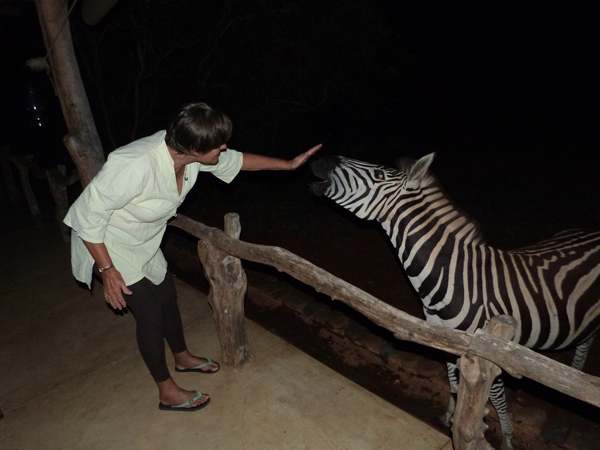
The owners of Leopard Walk Lodge are a wonderful couple –
Janet and Rob Cuthbertson. By
coincidence, Margie’s mother was a Cuthbertson!
AND, both families trace their roots back to Glasgow in Scotland! Could we be related?
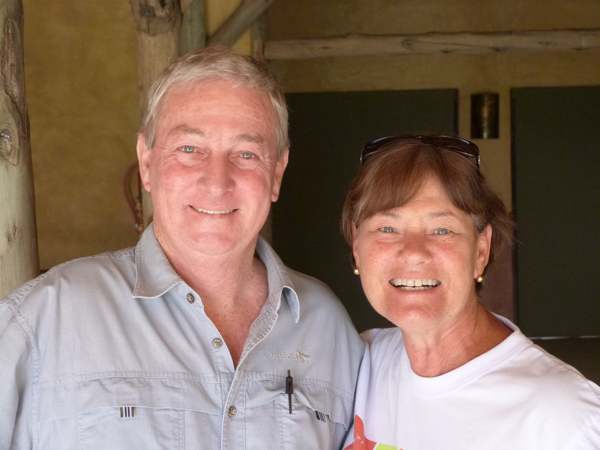
From this point on, we were off to the Game Parks…again, I
have hundreds of photos but I’ll just insert some of my favorites along the
way…
We visited the Hluhluwe section of the Game Reserve and got
our first look at Africa’s incredible national parks. Hluhluwe-iMfolozi was the first park
established here in 1895 and hosts the Big Five - Lion, Leopard, Elephant, Cape
Buffalo and Rhinoceros - plus an enormous population of zebras, giraffes,
nyala, impala, kudu, hyenas, warthogs, wildebeest and a slew of other small
animals.
Did you know that the Cape Buffalo was one of the Big Five?
Did you know that the Cape Buffalo was one of the Big Five?
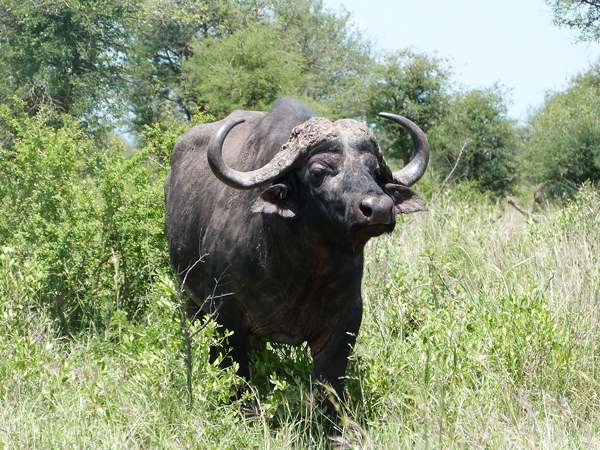
These guys are
the Rodney Dangerfield of the group in that they “don’t get no respect!” Truth is, they may look kinda dumb and slow
but they are really hot-tempered and can charge unexpectedly. A buffalo has four times the strength
of an ox. They could tip a car over if
they want to get at you. Cape buffalo are known to kill lions and often seek
out and kill lion cubs.The adage an elephant never forgets
would be matched by a buffalo never forgives. They have been known to attack
people that have harmed them - even years after the event. They are considered
one of Africa’s most dangerous species.
Moving on, we crossed the border into southeastern Swaziland
and drove to a private game reserve called Mkhaya. www.biggameparks.org Yet another gut wrenching drive to the Bush
Welcome Camp where we, thankfully, left our Toyota and jumped in a 12 passenger
open air Land Rover for a guided tour ending at the Stone Camp which would be
our home for the night. Again, we were
treated to an “Out of Africa” bungalow made of stone and thatch – open almost
all the way around to the outdoors and with beds surrounded by voluminous
mosquito netting.
We had a wonderful candlelight dinner beneath a giant
sausage tree and enjoyed traditional Swazi music, singing and dancing.There is no electricity at Mkhaya so we walked through the
jungle on paths lit with lanterns and slept deeply under the starry skies.
In the morning, we were awakened at 5:30am with fresh coffee
and hard biscuits called “rusks” which the Africans LOVE! (It must be an acquired taste…) We stumbled to the Land Rover at 5:30am for
our second tour followed by a HUGE bush breakfast at 9am and then a walking safari at 11am, lunch at 1pm and off on the Land Rover at 2pm for our final tour
and back to the parking lot to our car.
It was an amazing 24 hours. Here
we are in front of a rhino watering hole.
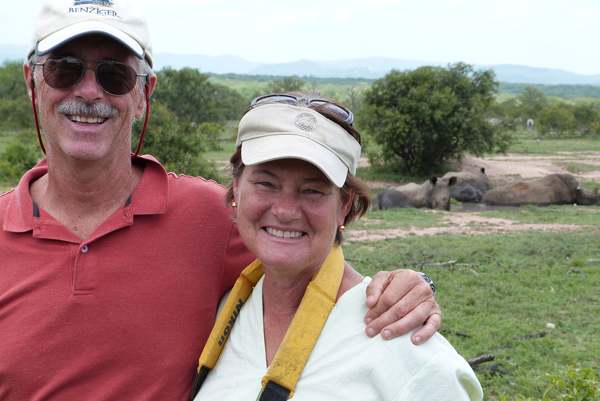
Crossing back to South Africa, we entered Kruger National
Park – considered by most authorities to be one of the Top Ten Sightseeing Destinations
in the World and we would definitely agree.
The Park stretches about 240 miles from the southern entrance, where we
began, to the north and covers almost 5,000 acres. It shares a border on the northeastern side
with Mozambique and with Zimbabwe to the north.
This is a source of continuous problems with regard to poaching
incursions but more on that later…
There are 12 Rest Camps in the Park as well as a number of
higher end game lodges. We stayed at two
of the rest camps in the southern end – Crocodile Bridge and Satura – in
traditional-style Rondavels. (Zulu Huts)
Our cottages were equipped with our own kitchen and bath. Check out the website to see more photos and
information – http://www.sanparks.co.za/parks/kruger
We did self-drive tours around the Park and one amazing guided tour at night. By the end of the four days, we had seen all of the Big Five plus many of the more elusive smaller game, mammals and reptiles.
Warthogs kinda grow on you after awhile. I now consider them cute little fellas! They have terrible vision which is why they
are so skittish. They also forage for
grass on their knees.
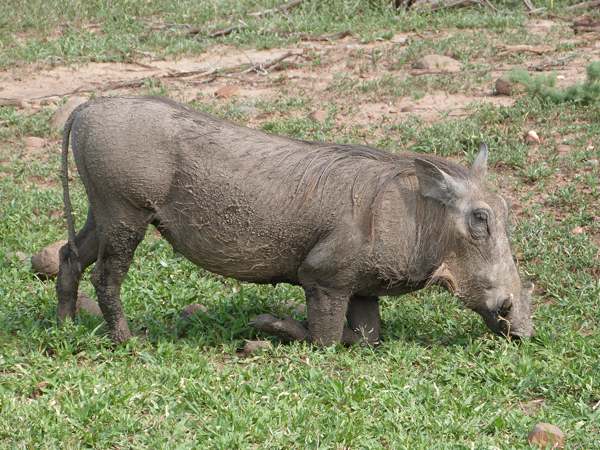
Elephants live in stable social units led by a
matriarch. We saw groups of up to 25
adults and their young traveling together.
The males (bulls) cruise around in bachelor groups until it’s time to
mate. They stick around for awhile when
the kids are young but usually return to their guy pals and leave the
child-rearing to Mom.
I couldn’t believe how close we came to some of these elephants! When they decide to block the road, they
don’t move until they are good and ready and, sometimes, there are so many that
you just have nowhere to go! You can see
in this photo there is a car behind this elephant so he decided to head
straight for us! Luckily, he veered off
into the bush before Margie had a panic attack!
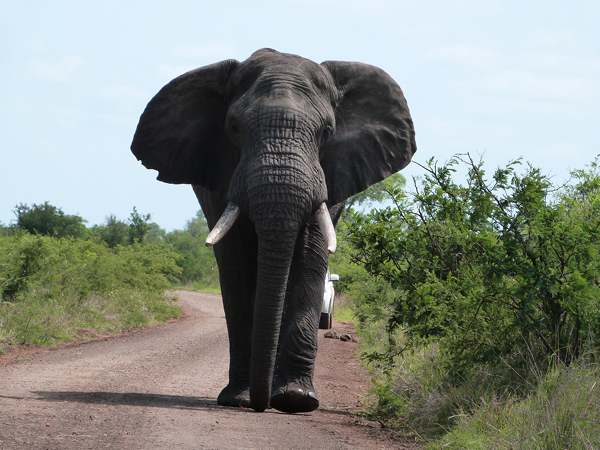
Older males often wander around alone. They (and their big tusks) are extremely
vulnerable to poachers. Demand for ivory
in China (mostly for religious icons) is never-ending. Good quality tusks can sell for over $600 a
pound!
It’s a little hard to see but this big old bull actually has
a GPS tracking device at the top of his head so that the Park Rangers can keep
an eye on him and get to him before the poachers do if he dies or, if they
sense he is in trouble. Look at the tusks on this old bull elephant.
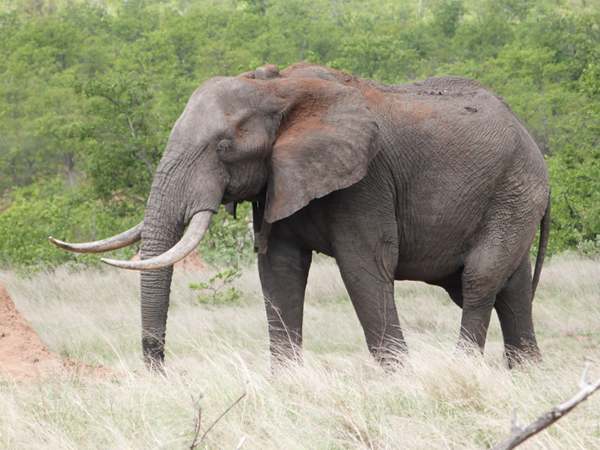
The Black Rhino’s jaw is round with a hooked up lip for
browsing bushes and low-hanging branches. Here is a black Rhino.
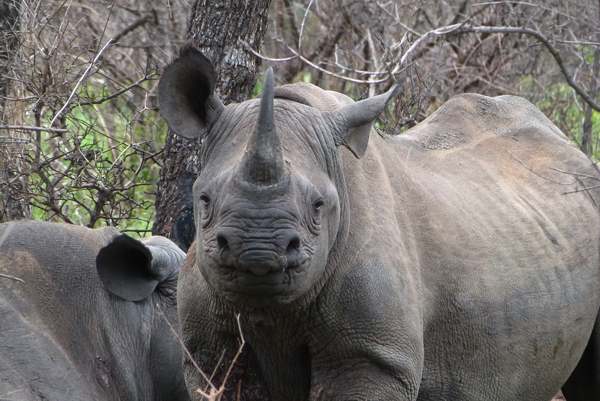

The White Rhino has a square jaw which is well adapted for
grazing and is bigger than the black Rhino, weighing in at up
to 5,200 pounds while the Black will max out at around 2,500.
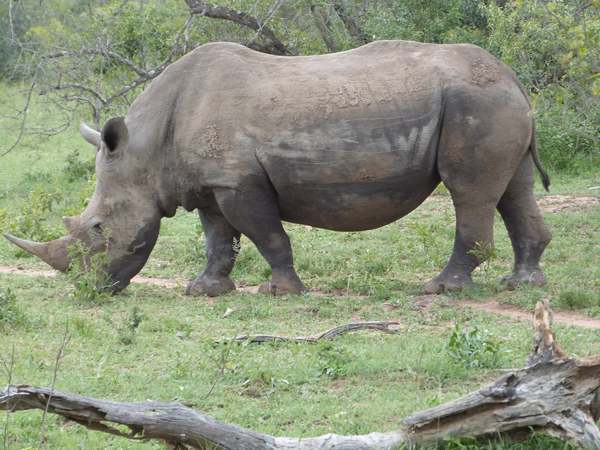
Rhinos were almost extinct in the 1950’s and 60’s and made a miraculous recovery thanks to conservationists. However, they are now subject to poaching due to demand in Eastern cultures for the powder made from their horns. It’s believed to be a super VIAGRA-type supplement.
This leopard was caught with its eyes in the
searchlights. We followed it for almost
20 minutes. They hide during the day and
hunt at night. This was our last night
in the park and the sighting completed our search for the Big Five.

Giraffes were everywhere!
You can’t miss them because the males can be up to 17 feet tall and
weigh 2,600 pounds! A newborn calf will
be about six feet tall at birth. There
is only one species of giraffe but there are eight groups within the species
and each has a distinctive coat pattern.
Giraffes can kill a lion by kicking with their powerful legs and huge,
sharp hoofs. They can run up to 35 mph
for short distances but they tire easily.
Giraffes are herbivores browsing throughout the day. Acacia is their favorite! In
Africa, many trees end up with flat tops after giraffes eat all their top
leaves and branches.
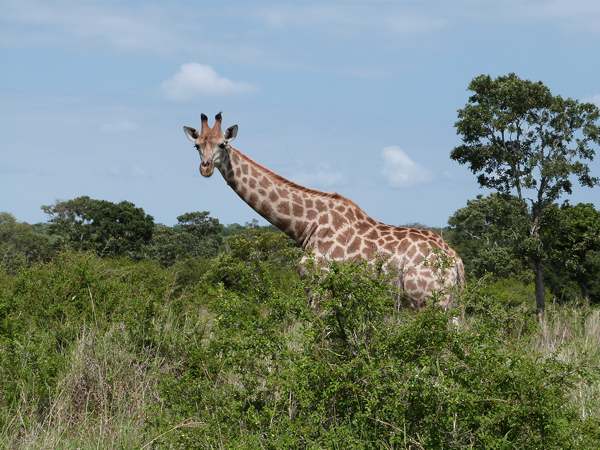
The zebra’s stripes serve to confuse predators. When the herd bunches up, it appears to be
one large single unit and less vulnerable to attack. Peter asked our guide why nobody rides zebras
and was told that their backbone is very soft and couldn’t support much
weight. They have very sharp senses and
often mix in with wildebeest or impala to alert the group against surprise
attack.
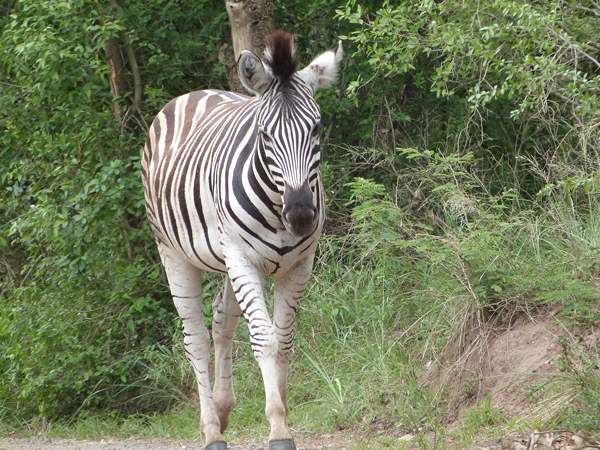
African Wild Dogs are seriously endangered. There are less than 5,000 on the entire
continent and their numbers are dwindling.
Wild dogs are also seriously misunderstood. They are not warm and cuddly-looking animals
despite the Mickey Mouse ears. They are
shot and poisoned by farmers and, until recently, by rangers who considered
them bloodthirsty raiders and dispersers of wild herds. Luckily, this reputation is changing. They actually serve an important role in
eliminating sick or weak animals, thereby preserving the natural balance of
nature.
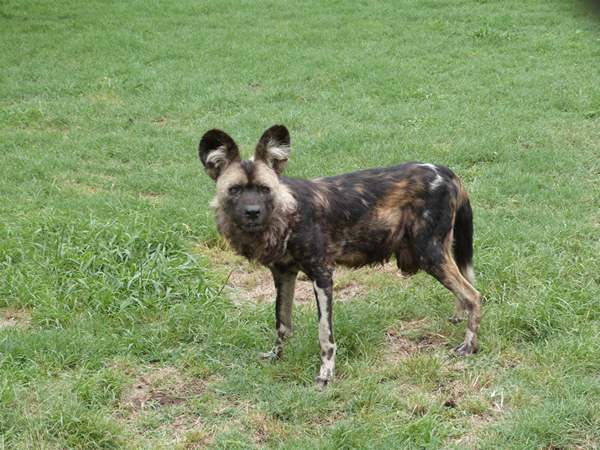
Nyalas are
abundant in the African bush and we were lucky enough to be touring the Parks
during the “birthing season” so there were babies everywhere! They were so cute we couldn’t stop taking
photos!
